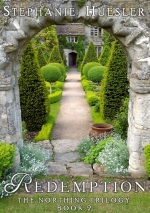 At last, I can announce it! My first published book, pre-Regency fiction called “The Price of Freedom” is out! Available on Amazon worldwide, and ready to read and enjoy in the Kindle e-book format!
At last, I can announce it! My first published book, pre-Regency fiction called “The Price of Freedom” is out! Available on Amazon worldwide, and ready to read and enjoy in the Kindle e-book format!
It’s been a long process, and one fraught with delays, hiccups, a lot of homework, and the unsexy side of writing. It’s my first baby – the story that started me writing several years ago, and has been the friend I honed my writing chops on. It’s hard to let go of that baby and let the wider world into its life, and allow it to take on a life of its own, but so it is.
As you know, self-published books are dependent on word-of mouth marketing. I would really appreciate your help! If anyone would like to interview me, review the book, and / or write a great review on Amazon, that would be amazing! If you know anyone remotely interested in literary fiction, Jane Austen, Georgette Heyer (my style has been compared to both of those writers by editors & other writers), historical fiction, Regency or Pre-Regency era, please pass the word on to them!
Here’s a review, from Sue Moorcroft (Author, tutor):
“She was tall and willowy, and had a way of coming into a room like a welcomed summer breeze, drawing all eyes to herself.” – What a great description! It’s the kind of thing I wish I’d written. It really conjures up an image for the reader.
“…his death at such a ripe old age could not conveniently be avoided I suppose…” – A great snippet of dialogue. It’s exactly this kind of sly humour, that Jane Austen did so well, that earns for Regency fiction the tag, ‘comedy of manners’.
So… pass the word, download the book, grap a cuppa and curl up for a good read!
 “In these days of increasing rapid artificial locomotion, may I be permitted to say a word in favour of a very worthy and valuable old friend of mine, Mr. Long Walk?
“In these days of increasing rapid artificial locomotion, may I be permitted to say a word in favour of a very worthy and valuable old friend of mine, Mr. Long Walk?







